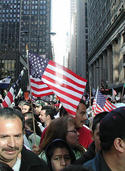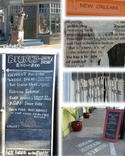Data from the 2011 censuses indicates that mass transit is gaining market share in all of but one of Australia's major metropolitan areas. The greatest increase as in Perth, at 21% , aided by the new Mandurah rail line to the southern urban fringe. On average, mass transit's market share increased by 10.8% in the five metropolitan areas with more than 1 million population. This increase seems likely to be in response to both mass transit service improvements (such as in Perth) and higher petrol (gasoline) prices. read more »
Demographics
California is in for a World of Hurt
California’s political class, led by Governor Brown, has been patting itself on the back for solving California’s problems. This celebration is ludicrous. What they’ve done amounts to a mere slowing down in a long-term political, fiscal, and demographic decline. read more »
Richard Florida Concedes the Limits of the Creative Class
Among the most pervasive, and arguably pernicious, notions of the past decade has been that the “creative class” of the skilled, educated and hip would remake and revive American cities. The idea, packaged and peddled by consultant Richard Florida, had been that unlike spending public money to court Wall Street fat cats, corporate executives or other traditional elites, paying to appeal to the creative would truly trickle down, generating a widespread urban revival. read more »
America's Fastest- and Slowest-Growing Cities
Since the housing crash of 2007, the decline of the Sun Belt and dispersed, low-density cities has been trumpeted by the national media and by pundits who believe America’s future lies in compact, crowded, mostly coastal and northern, cities. read more »
California Needs More Immigrants
Southern California, just a few decades ago the fastest-growing region in the high-income world, is hitting a demographic tipping point. With a decade or more of domestic out-migration and a sharp fall in immigration, the region is morphing from a destination that attracts dreamers and builders into a place increasingly dominated by those born or bred here.
To some demographers, this transition from a magnet for migrants to a more native-born population represents something of a boon. As for migrants, one USC demographer wrote that California acts like "a gold pan that sifts through aspiring talent and keeps the best." read more »
Is Hawaii the Bellwether for California?
California used to consider itself the leading state and the bellwether for the entire country. Now that the entrepreneurial initiative has mostly switched to Texas and other such places, and Texas’s infrastructure has pulled ahead of California’s in its quality (I lived in Texas in the 1970s, and it was not so then!), California is, at the very least, still thought of as a bellwether for the whole country, if perhaps a dystopian one. But there is a state that even Californians look to for popular cultural leadership, visit frequently, and admire. read more »
Chicago: Outer Suburban and Exurban Growth Leader
Greg Hinz at Crain's Chicago Business congratulates Chicago for its nation-leading population growth. Heinz also notes that the far suburbs also gained population strongly, but there had been losses in the areas between the two. He asks: "the question now is whether the area can prosper with a thriving core but sinking neighborhoods and inner-ring suburbs around it." read more »
Should California Governor Jerry Brown Take a Victory Lap?
"Memento Mori" – "Remember your mortality" – was whispered into the ears of Roman generals as they celebrated their great military triumphs. Someone should be whispering something similar in the ear of Gov. Jerry Brown, who has been quick to celebrate his tax and budget "triumph" and to denounce as "declinists" those who threaten to rain on the gubernatorial parade. read more »
- Login to post comments
Communities Need to Build Better Millennial Connections
A remarkable, but mostly unnoticed, 2012 study found a powerful correlation between a community’s civic health and its economic well being. The analysis by the National Conference on Citizenship (NCoC) and its partners found that the density of non-profits whose purpose was to encourage their members’ participation within the community correlated strongly with the ability of a locality to withstand the effects of the Great Recession. read more »
Gentrification and its Discontents: Notes from New Orleans
Readers of this forum have probably heard rumors of gentrification in post-Katrina New Orleans. Residential shifts playing out in the Crescent City share many commonalities with those elsewhere, but also bear some distinctions and paradoxes. I offer these observations from the so-called Williamsburg of the South, a neighborhood called Bywater.
Gentrification arrived rather early to New Orleans, a generation before the term was coined. Writers and artists settled in the French Quarter in the 1920s and 1930s, drawn by the appeal of its expatriated Mediterranean atmosphere, not to mention its cheap rent, good food, and abundant alcohol despite Prohibition. read more »




















